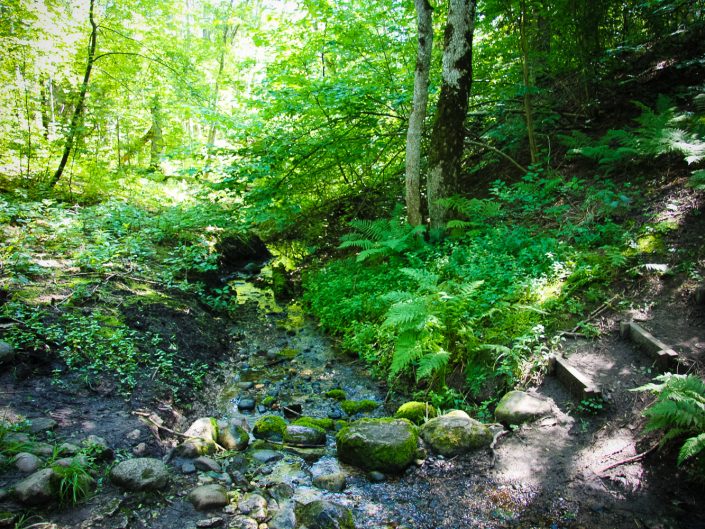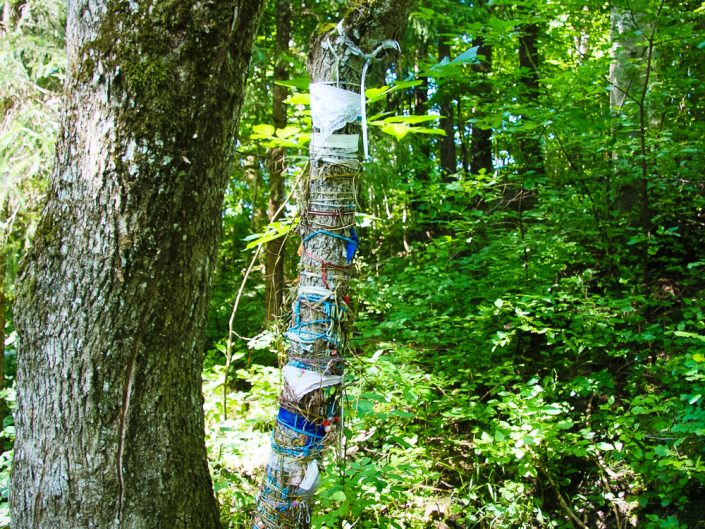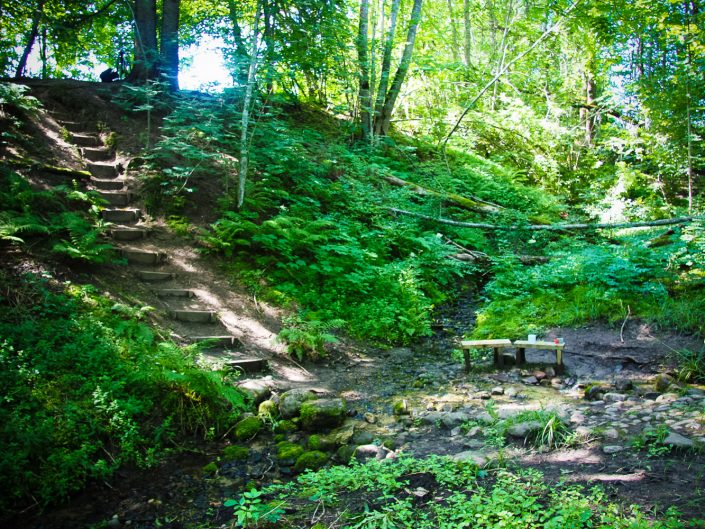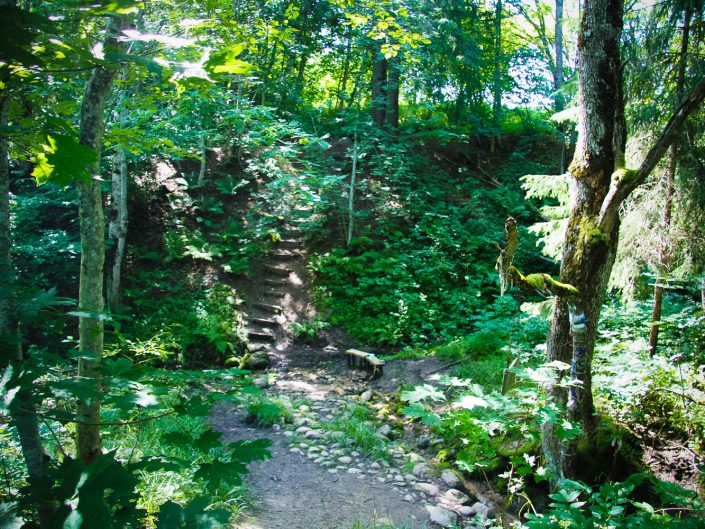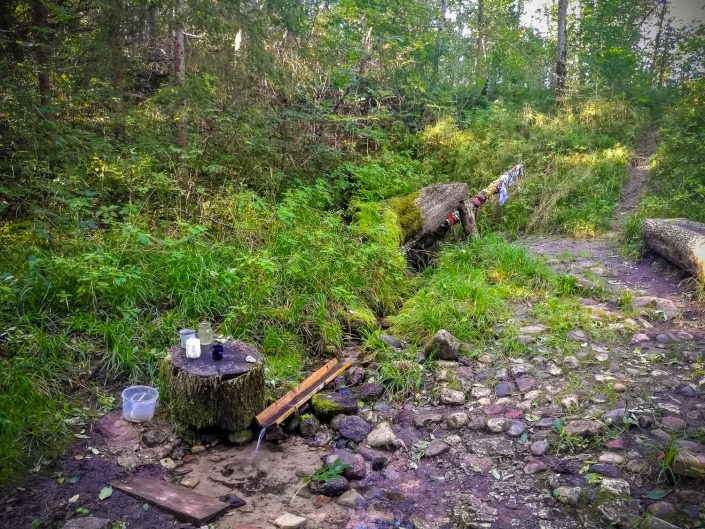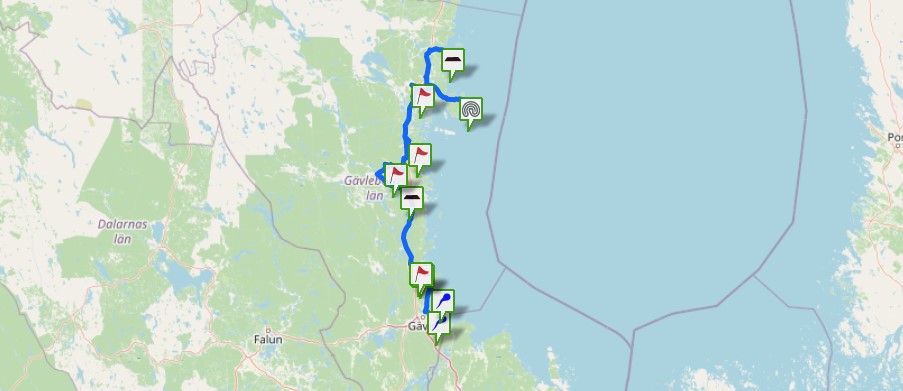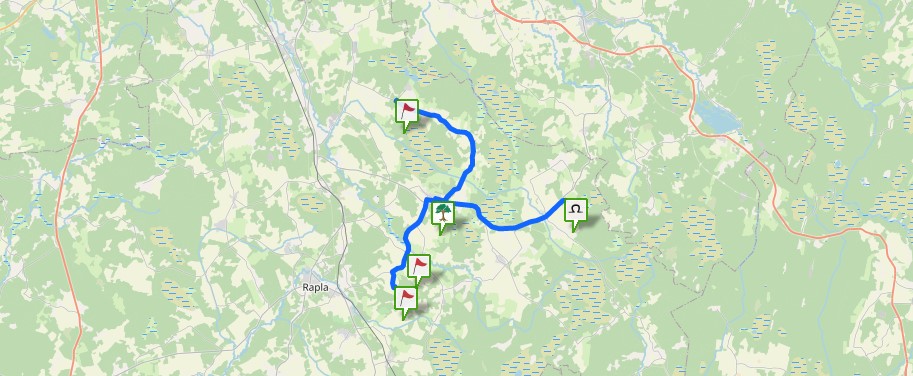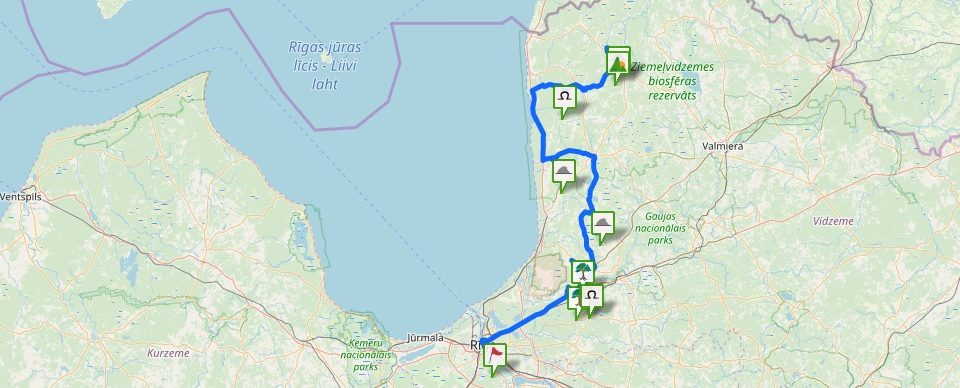Local archaeological heritage (State Inspection for Heritage Protection, No 1640). One of the most popular healing springs in Latvia. It is believed that the Bolēni Spring is hypsometrically the highest flowing spring in Latvia nowadays — about 262 m above the sea level. The spring is situated in an 8 meters deep ash ravine, it is about 1.5 square meters, 20–30 cm deep. In the spring the water always as if boils and does not freeze up in winter, because the spring has a constant temperature of + 7 °C. Downwards the outlet place in the spring bed, a groove has been arranged for water taking needs. The Bolēni Spring is a geological and geomorphological heritage under protection. Sacrificing traditions have remained until now, about which fabric ribbons tied into the nearby trees and bushes bespeak. Both the Bolēni Hill and its spring are located in the Vestiena Protected Landscape Area and within the territory of “Natura 2000” (Grīnbergs, 2008; Madona, 2010, ER; Vietas Ltd, 2005–2012). Nearby is the Dēklaiņi Hill, Abriena Hill, Vālēni Oak.
It is called by people also the Eye Spring, Laima’s Springs or Health Spring. It is associated with the power of healing eye diseases. Several tales have remained about the origin of the Health Spring and the Raganīte. One tale is as follows. Once in a summer morning when the sun was rising, Laima sat on the edge of the ash ravine. She was weeping, and her tears were running towards the morning against the Sun. The God was passing by and he asked why she was crying. Laima poured out her complains then. She wished the humans good life and health, but then many were afflicted and she felt sorry for them. Then the God made a spring flow out on that spot and ordered the water flow along Laima’s tear way. In this way the Oši Spring in the ravine and the river appeared flowing against the Sun. The spring and river waters were granted healing powers so that all diseases could be healed in them, and Laima would never have to cry again. Since that time Laima has been walking around smiling, she often comes to the Health Spring and the Raganīte River. (1838, 4104 Several narrators in Bērzaune and Viesiena of Madona;collected by J. Krūmiņš, around 1947–1951. County Tales. Vidzeme (Novadu teikas. Vidzeme). 2007)
The spring has an opposite flowing direction unlike springs usually do (the spring flows against the Sun to the east). Due to this fact healing powers were attributed to the spring.
